Blog Post
In the realm of fitness and sports nutrition, few supplements have garnered as much attention and acclaim as creatine. Widely recognized for its role in enhancing strength, muscle mass, and overall athletic performance, creatine has become a staple in the toolkit of many fitness enthusiasts and athletes. But how does this compound work within the human body?
Dietary Intake
Creatine intake from the diet
Creatine can be made by the body itself and you can also ingest it via the diet. Creatine is mostly concentrated in animal muscle, which is therefore the primary dietary source of creatine.Dietary sources of creatine are mainly:
- Salmon
- Tuna
- Milk
- Herring
- Beef
- Pork
- Chicken
Ergogenic effects
Ergogenic effects of creatine
Creatine supplementation can benefit exercise shorter than 30 seconds. In high-intensity exercise creatine supplementation can lead to:

Increased power output

Decreased fatigue (especially over repeated bouts)

Decreased time to complete a fixed distance

Increased strength
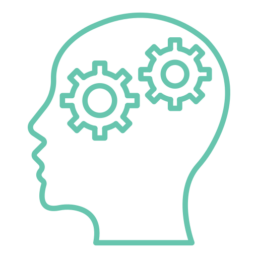
Improved cognitive processing
Creatine Monohydrate
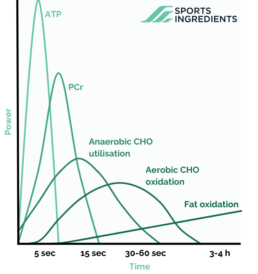
Creatine Monohydrate, what is it?
Creatine is a non proteogenic amino acid, which means that creatine is not used for proteins. Creatine is namely used for the production of energy.
During physical movement, that lasts up to 15 seconds, creatine can be used to produce energy. For exercise durations longer than 15 seconds, other energy systems come into place like shown in the illustration.
Energy Production
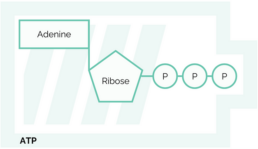
Creatine and energy production
Our body uses the molecule ‘ATP’ to generate energy. ATP stands for Adenosine Triphosphate and is often referred to as the energy currency of the cell. So think of ATP as a battery.ATP exists of a base molecule with three phosphate groups bound to it. When the body needs energy, it will divide the battery ‘ATP’ into another molecule named ‘ADP’ and a loose phosphate group (P) which releases energy.
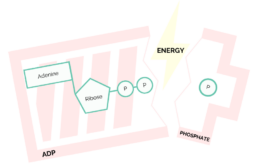
ADP stands for Adenosine Diphosphate. It’s a molecule that’s a bit like a partially used or broken battery in the cell. So think of ADP as a rechargeable battery that has given away one of its energy packages.P is a loose phosphate group and can be seen as one of the energy packages.
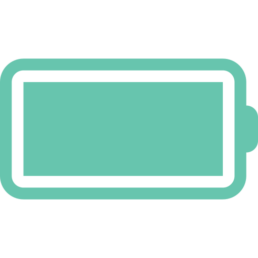
ATP is the energy currency of a cell; think of ATP as a battery

ADP is the empty or broken battery in a cell
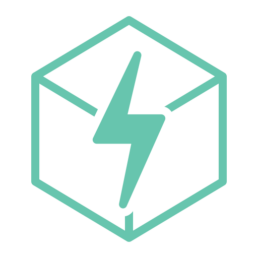
P, a phosphate group, is one of the energy packages
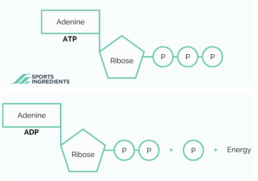
When the cell needs energy to do something, it takes ADP and adds another phosphate to it, turning it back into ATP (Adenosine Triphosphate). This process is like recharging the battery, making it ready to provide energy again.
In simple terms, ATP is like a fully charged battery, and ADP is like a battery that’s been used a bit but can be easily recharged with P to keep the cell powered up and running smoothly.
Recharging atp
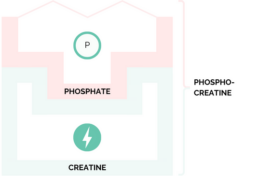
The role of creatine in the recharging of ATP
When ATP is broken down into ADP and P, the loose phosphate groups need to be captured. This is where creatine (Cr) comes into place. Creatine is like a storage unit of quick energy for the muscles. The loose phosphate groups are captured by creatine creating phosphocreatine (PCr). PCr is like a backup battery or a charger that helps your muscles get a rapid burst of energy for short and intense activities, and it gets recharged during your moments of rest.
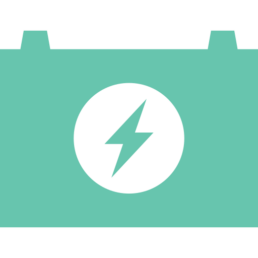
Creatine is like a quick energy reserve for your muscles

P, a phosphate group, is one of the energy packages
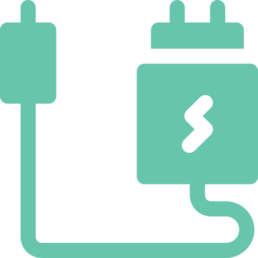
PCr is like a backup battery or a charger
Conclusion
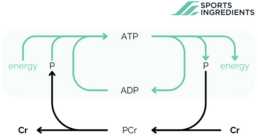
Conclusion / Creatine Monohydrate
Creatine stands as a widely researched and effective supplement that has proven benefits for enhancing athletic performance, muscle strength, and overall exercise capacity. Its ability to replenish ATP, the body’s primary energy source, has made it a staple for athletes and fitness enthusiasts alike. As a manufacturer it is important to understand the mechanism of creatine in the human body.Are you interested in more information about creatine? Feel free to contact us.
Related Products
How to read extract ratios?
Misunderstandings on what plant-to-extract ratios signify are common. These ratios are often thought to indicate the amount of active ingredient present or the purity of the extract. These are both common misinterpretations of plant-to-extract ratio’s. This blog post will tell you more about what these plant-to-extract ratios actually mean.
Protein content determination: is it always accurate?
Products containing protein are required to list the protein content on their nutritional labels. The determination and calculation of this protein content are commonly performed using the Kjeldahl method. This method measures the amount of nitrogen in the product to estimate its protein content. This blog will explain the Kjeldahl method and assess its accuracy.
Gastro-resistance explained
Nowadays dietary supplements are occasionally labelled gastro-resistant. Often the question arises what does gastro-resistant mean and what is it good for? This blog will give more insight into gastro-resistant supplements and their benefits.
Liposomes in sports nutrition
Originating from the drug industry, liposomes are now making their way into the world of food supplements. Liposomes are renowned for their role in targeted supplement delivery within the body. But what are liposomes?
Omega-3 in Sports Nutrition
Omega-3 fatty acids are a group of polyunsaturated fatty acids that are crucial for various bodily functions. Since the human body cannot produce these fatty acids on its own, they must be obtained through diet or supplements. The three main omega-3 fatty acids are alpha-linolenic acid (ALA), eicosapentaenoic acid (EPA), and docosahexaenoic acid (DHA).
The Ultimate Recovery Drink after Sports
Post-workout recovery is essential for athletes across various disciplines to replenish energy stores, repair muscles, and optimize performance. Whether you're an endurance runner, a strength athlete, or engaged in intermittent sports, the ideal recovery drink can make a significant difference in your recovery process. In this guide, we'll explore the key components necessary for crafting the perfect recovery drink tailored to the specific demands of endurance, strength, and intermittent sports.

